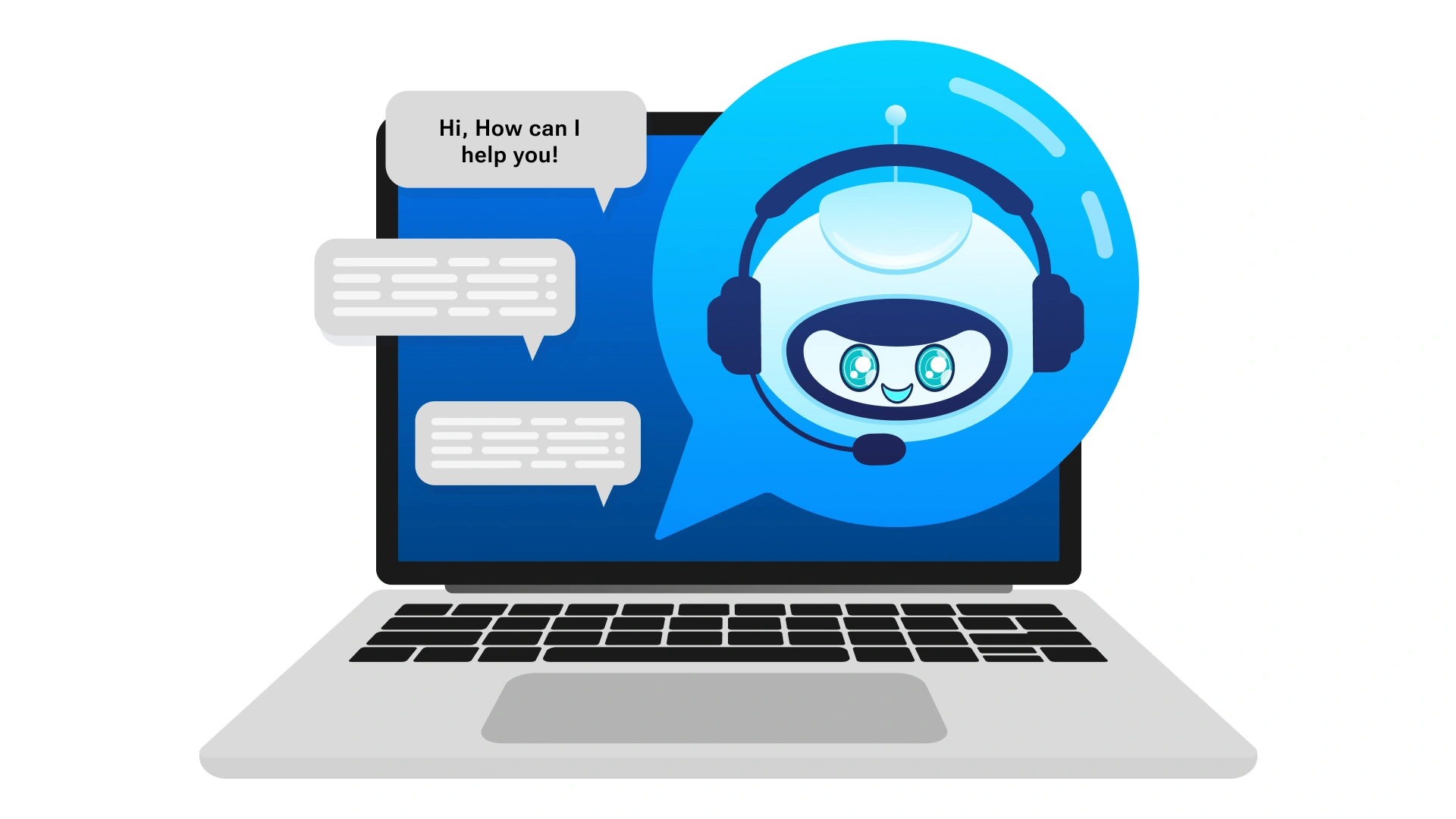Artificial intelligence (AI) is here and is revolutionizing the way companies engage with their clientele. It is no longer a sci-fi idea. The chatbot is among the most widely used and significant AI applications. Even if you have no technical experience, this tutorial will take you through the fundamentals of developing an AI chatbot, regardless of whether you are a product manager, company founder, or just an inquisitive learner.
Welcome to your ultimate beginner’s guide to AI chatbot development — simplified, demystified, and ready to get you started in 2025.
What Is an AI Chatbot?
An AI chatbot is a computer program that replicates human-like communication with users, usually through text or speech, by utilizing artificial intelligence, natural language processing (NLP), and machine learning.
AI-powered chatbots can understand context, interpret intent, and learn from encounters to get better over time, in contrast to rule-based bots that depend on prewritten responses.
Why AI Chatbots Matter in 2025
In today’s fast-paced digital world, customers expect instant responses and personalized experiences. AI chatbots provide:
- 24/7 availability
- Scalable support for thousands of users
- Automated lead generation and customer engagement
- Cost savings and operational efficiency
Businesses across industries — from retail and banking to healthcare and education — are investing in AI chatbot development to enhance user experience and stay competitive.
Types of Chatbots: Know the Basics
Before diving into development, it’s important to understand the different types of chatbots:
1. Rule-Based Chatbots
- Follow predefined paths or decision trees
- Limited in understanding free-form language
- Great for FAQs or basic workflows
2. AI-Powered Chatbots
- Use NLP and machine learning
- Understand user intent and context
- Improve over time through training and feedback
3. Hybrid Chatbots
- Combine rule-based logic with AI capabilities
- Offer control with added flexibility and intelligence
How AI Chatbots Work: The Core Components
Here’s what makes an AI chatbot function behind the scenes:
1. Natural Language Processing (NLP)
NLP allows the bot to understand human language, analyze meaning, and respond appropriately.
2. Intent Recognition
This helps the chatbot determine what the user wants — whether it’s booking a ticket, tracking an order, or asking a question.
3. Machine Learning
Chatbots learn from past interactions, improving their ability to respond accurately over time.
4. Knowledge Base/Database
A central place where the chatbot retrieves information and answers.
5. API Integrations
These allow your chatbot to connect with external systems (e.g., CRM, payment gateway, email marketing tools).
Beginner’s Roadmap to AI Chatbot Development
Ready to build your first AI chatbot? Here’s a step-by-step guide tailored for beginners.
Step 1: Define the Use Case
Start by asking: What problem will your chatbot solve?
Common use cases include:
- Customer support
- Appointment scheduling
- Lead generation
- E-commerce recommendations
Step 2: Choose the Right Platform
For non-developers, several no-code or low-code platforms make chatbot development easy:
- Chatfuel
- ManyChat
- Tidio
- Google Dialogflow
- Microsoft Power Virtual Agents
If you have technical support or want full customization, explore open-source frameworks like:
- Rasa
- Botpress
Step 3: Design the Conversation Flow
Create a flowchart of how your chatbot should respond to different inputs. Focus on:
- Greeting users
- Handling FAQs
- Error handling
- Escalation to human agents
Step 4: Train the Bot with NLP
Using tools like Dialogflow or IBM Watson, you can train your bot to understand:
- User intents (e.g., “check order status”)
- Entities (e.g., order number, location)
- Synonyms and variations in language
Step 5: Integrate with Messaging Channels
Connect your chatbot to platforms like:
- Facebook Messenger
- Your website
- Mobile apps
- Slack or Teams (for internal tools)
Step 6: Test, Refine, and Launch
Before launching, test the chatbot thoroughly:
- Check responses to various inputs
- Ensure fallback responses make sense
- Optimize for edge cases and errors
Best Practices for AI Chatbot Development
Even beginners can create powerful chatbots by keeping these tips in mind:
- Start simple: Focus on one use case and expand later.
- Use clear, conversational language.
- Add human fallback: Allow handoff to a live agent when needed.
- Respect user privacy: Be transparent about data usage.
- Measure performance: Use analytics to track interactions, satisfaction, and drop-off rates.
Industries Using AI Chatbots in 2025
AI chatbots are being used across every major sector:
- Retail: Personalized shopping assistants, order tracking.
- Healthcare: Appointment scheduling, symptom checking.
- Banking: Balance queries, fraud alerts, virtual advisors.
- Education: Virtual tutors, admissions support, student helpdesks.
- Travel: Booking confirmations, itinerary updates.
Challenges Beginners Should Know
While chatbot development is more accessible than ever, beginners may face challenges like:
- Handling complex user queries
- Avoiding robotic or repetitive replies
- Ensuring inclusivity and language diversity
- Keeping up with changing AI models
Don’t worry — the key is to start small, iterate often, and learn as you go.
Final Thoughts: Start Your AI Chatbot Journey Today
Developing an AI chatbot doesn’t have to be difficult. Anyone can develop a smart, responsive chatbot that truly adds value if they have the correct resources, well-defined objectives, and a strategy that is easy enough for beginners to understand.
Gaining proficiency with chatbot technology can lead to improved customer experiences, more efficiency, and innovative opportunities as AI continues to transform how companies interact with their customers.
